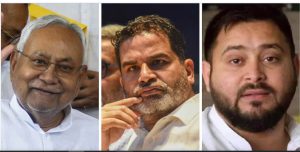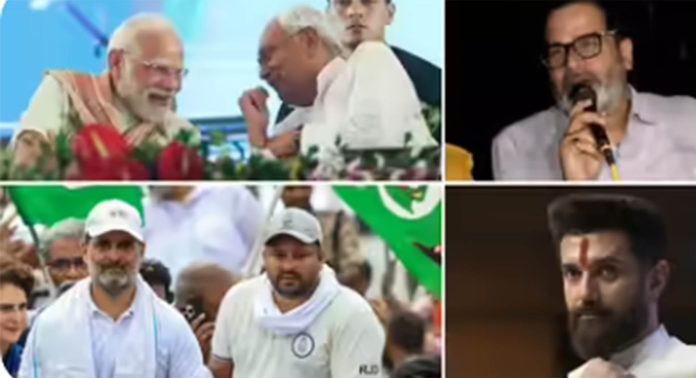ihar’s 2025 elections focus on imminent change amid public disillusionment with long-standing politics; Nitish Kumar, Tejashwi Yadav face critical challenges shaping the state’s future.
By Dr. Mohammad Farooque, Kolkata, October 8, 2025
Bihar stands at the crossroads of change as the forthcoming elections heat up the political landscape once again. The Election Commission’s announcement has stirred the political camps, setting the stage for voting in two phases on November 6 and 11, with results to be declared on November 14. The focal point is not merely who will win, but whether Bihar itself will witness a decisive shift. After two decades marked by entrenched power, shifting alliances, broken promises, and unmet development aspirations, this election’s outcome hinges significantly on public disenchantment.

The focus on change is palpable among key leaders. Nitish Kumar, once hailed as the paragon of good governance, now faces declining popularity, health concerns, and a weary public image. His attempts to revive support through development projects and quick inaugurations seem insufficient, as the NDA coalition shows signs of eroding strength. The BJP grapples with internal weaknesses despite Narendra Modi’s enduring influence, relying heavily on Nitish’s shadow to sustain its presence. The real test remains whether mass rallies translate into votes or voter fatigue.
Meanwhile, Tejashwi Yadav is endeavoring to reshape his father Lalu Prasad Yadav’s legacy amid youth unemployment, inflation, and social anxieties. Though he commands significant support from Yadav and Muslim voters, caste-based divisions still limit the reach of his coalition. Prashant Kishor’s Jan Suraj Party, presenting itself as an alternative force, has garnered attention by fielding candidates representing women, Muslims, and ABC communities. Yet, whether slogans alone suffice to penetrate the electoral arena remains uncertain.
Allies like Chirag Paswan, Upendra Kushwaha, and Jitan Ram Manjhi are pivotal yet precarious components of the NDA, with their fractured alliances potentially jeopardizing the coalition’s performance. Congress, despite historic weaknesses, seeks relevance among marginalized communities, aiming to fill the gaps left by major players.
Bihar’s saga reflects entrenched social divisions, fragmented dreams, and faltering leadership. Despite statistical gains, poverty, migration, and lack of education and health infrastructure continue to plague the state. Should this election revolve only around caste and freebie politics, it would mark a defeat for democracy itself. Yet, murmurs of change and new directions hint at the possibility of renewed political dynamics.
This election is more than a contest of parties—it is a referendum on Bihar’s path forward. Change, whether through continuity or disruption, is the key focus of 2025.







